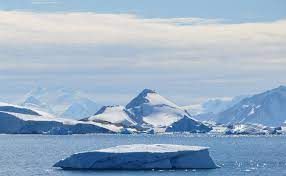This past summer, I worked at Woods Hole Oceanographic Institution (WHOI), a marine science research institute with a variety of labs and facilities. In the middle of the summer, a lab I was involved with found out that some members would be taking a trip to Antarctica to collect samples. One of my good friends was asked to spend four months in Antarctica working at the base used by the lab. This prompted conversations about apparel, hobbies, and duties. However, it also welcomed stories from scientists who had already taken this trip. Many of those stories surrounded the Drake Passage, the infamous body of water that stands between the tip of South America and Chile.
This passageway is often crossed using a massive vessel often provided by a national organization and equipped with incredibly experienced and well-trained staff. Recently, a group of six men crossed the Drake Passage in a rowboat. This voyage was particularly shocking because it was completely dependent upon the constant usage of manpower. Meaning, three of the six men had to be rowing at any given time. If the boat were to be still for any moment, it would capsize.
The men crossed the passage on a 29-foot boat, the Ohana, in 13 days. They faced 40-foot waves, wind from all directions, and extremely cold water washing over them as they struggled to keep the boat afloat. According to an article from the Associated Press, five of the six men are recognized as champion rowers and adventurers. However, their rowing skill was not their only capability put to the test. Avoiding icebergs and whales was essential; one bad move would sink their ship.
Despite the “record-breaking” language surrounding this incredible feat, these men were not the first to cross the Drake Passage in a row boat. In 1988, a four-man team led by Ned Gillete reached an island surrounding Antarctica.
The treacherous nature of the Drake Passage can be attributed to the location and history of the passage. There is much debate surrounding the formation of the Drake Passage, with many believing that it formed sometime around when the Eocene Epoch ended and the Oligocene Epoch began approximately 34 million years ago. The Drake Passage likely formed as a result of the separation of South America and Antarctica due to plate tectonics. It has been proposed that some of these plates sank below each other, creating sudden increases in depth. The depth of the Drake Passage is one of the major factors that create such rough conditions. The average depth of the Drake Passage is approximately 11,000 feet with portions as deep as almost 16,000 feet.
The opening of the Drake Passage was incredibly significant to global oceans due to its constriction of the Antarctic Circumpolar Current. This current encircles Antarctica and acts as a barrier, protecting the Antarctic ice sheet from warmer waters. It has been proposed that the Drake Passage enabled the solidification of the Antarctic as the home to massive ice sheets, as warm water has been largely unable to reach the ice. This current and the winds associated with it provide a reason for the incredible waves and stormy conditions experienced when crossing the Drake Passage.
Despite the infamy of the Drake Passage, this trip is common to scientific and tourism communities. Currently, there are scientists stationed around the continent. The National Science Foundation has even declared Palmer Station (a base on a series of islands close to the southernmost point of Chile) to be a “long-term ecological research site.” This is one of many stations on the continent – all of which have a variety of research being done at them. In addition to scientific expeditions, if one were willing to pay almost $20,000, they could find themselves among the Antarctic penguins, icebergs, and humpback whales.
Geochemistry, Geophysics, Geosystems (2007). DOI: 10.1029/2005GC001224
www.britannica.com/science/Eocene-Epoch
www.nytimes.com/1988/03/07/sports/to-antarctica-by-oar.html
www.hurtigruten.com/en-us/expeditions/stories/drake-passage-facts/




